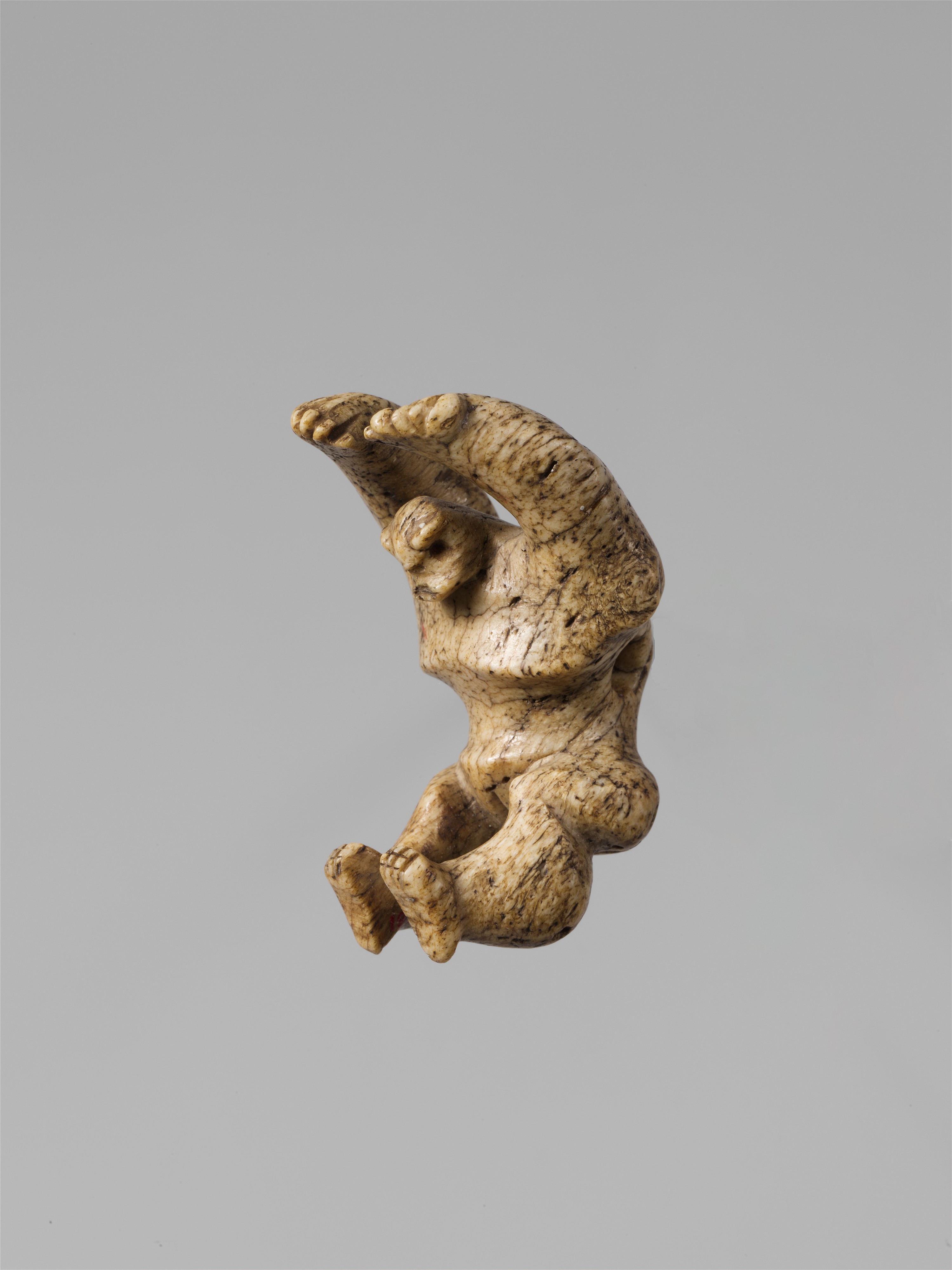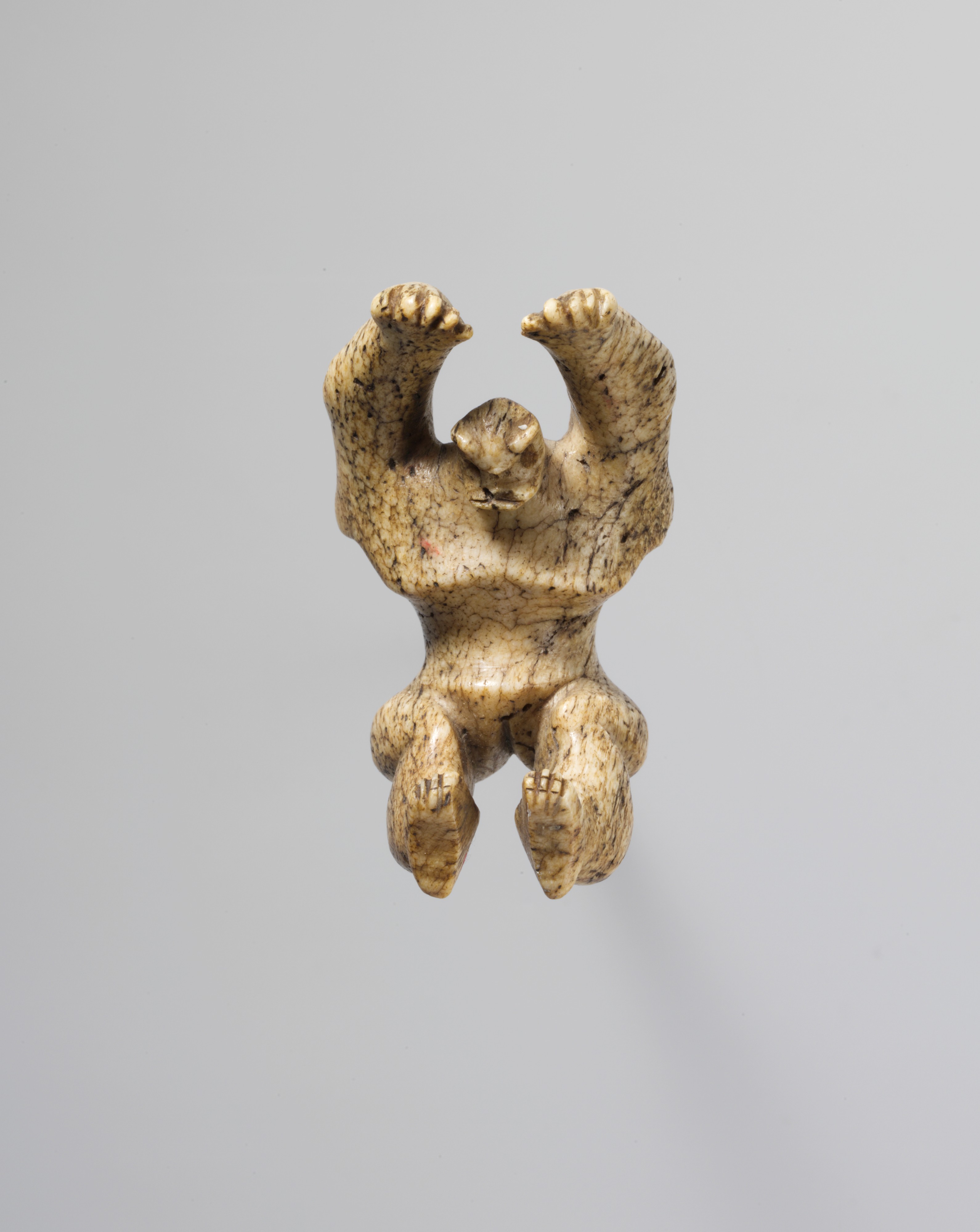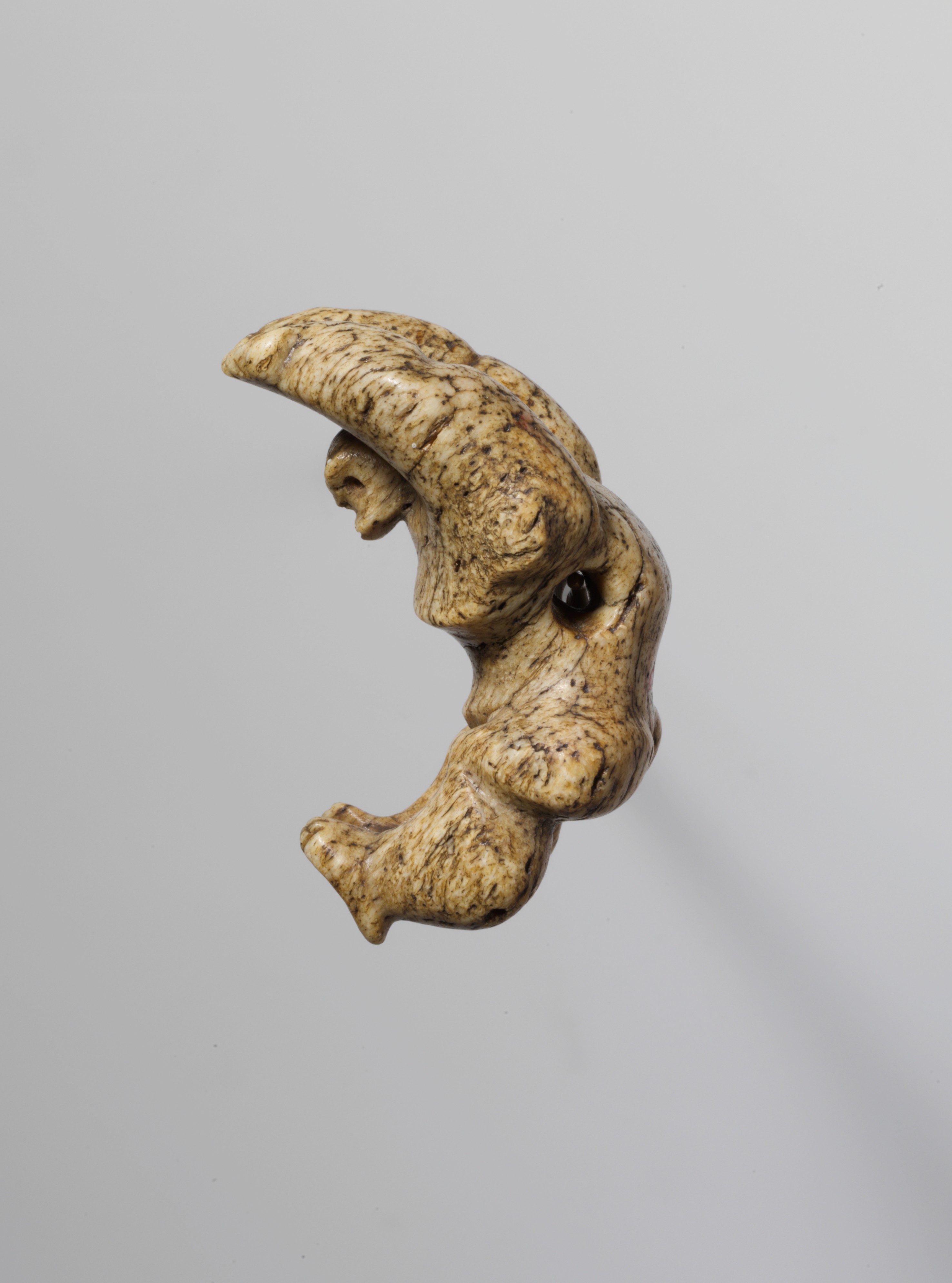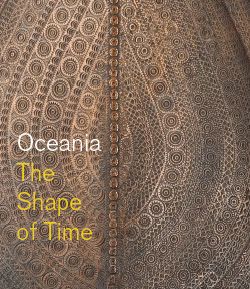Pendant
Not on view
This rare whalebone pendant bears many of the hallmarks of distinction for which Hawaiian figural sculpture is best known. Expertly finished, the surface volumes of the body are boldly pronounced. An accentuated waist and rib cage flare out into the strong musculature of the upper torso and arms, and these are matched by definition in the lower half of the figure’s body — buttocks, thighs, flexed calves. Spare yet highly expressive, further detailing defines the ridge of the back, individual toes and fingers; even eyebrows are angled with a single stroke to create a furrowed brow, the lips pursed forward in an expression of quiet focus and concentration. Despite its diminutive size, this sculpture loses nothing of the power and energy associated with the huge monumental sculptures for which Hawaii is best known.
Carved from a section of whalebone, the figure was likely originally suspended from bunched coils of finely plaited human hair to form a necklace in the manner of the more widely known whale ivory pendants known as lei niho palaoa. (See also 1979.206.1623 for a fine example, also in the Michael C. Rockefeller Memorial Collection, currently on display in Gallery 354). The dynamism of this figure, captured in a moment of poised vitality, is the only known example of such a pendant skillfully shaped into a human figure. While from certain angles the figure appears to be leaping or springing acrobatically into action, in fact it finds its perfect equilibrium supported on carefully delineated fingertips, gently balanced on its front tiptoes. Bending forward in this way the figure’s body creates a strong, powerful arch encapsulating within its raised arms the bounded space of the universe. In his innovative analysis of Hawaiian sculpture, Valerio Valeri (1985) identifies the profound significance of the crescentic form throughout the canon of Hawaiian art. Crescents and arches allude to the canopy of the sky, a threshold which connects the divine realm to the earthly and links high-ranking nobility (ali’i) with their divine forebears. Resting naturally in an arch spanning onto the chest, the necessary privilege to wear such a chiefly item was indeed reserved for the elite. For whalebone, as well as the fine bolts of human hair from which it was suspended, carried important genealogical associations with divinity, further enhancing the mana and standing of those entitled to wear such high-status arts.
Sources
Cox, J. Halley, with William H. Davenport. 1988. Hawaiian Sculpture. Honolulu: University of Hawaii Press.
Valeri, Valerio. Kingship & Sacrifice: Ritual and Society in Ancient Hawaii. Chicago: University of Chicago Press, 1985.
Due to rights restrictions, this image cannot be enlarged, viewed at full screen, or downloaded.
This artwork is meant to be viewed from right to left. Scroll left to view more.








